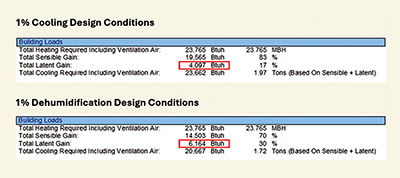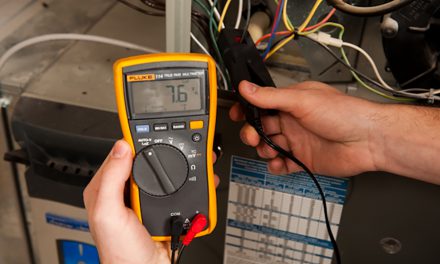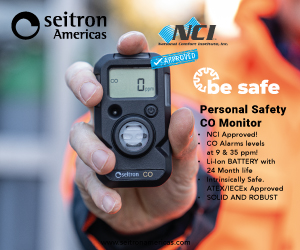I lean toward sizing for the higher load, either heating or cooling, to take full advantage of the heat pump’s efficiency. Of course, that may mean I’ll need additional dehumidification through a separate dehumidifier. This course of action avoids electric heat strips altogether.
Even when sizing for cooling, supplemental dehumidification is often necessary in humid climates, especially in modern high-efficiency homes. A good building envelope can significantly reduce sensible loads. Still, latent loads remain about the same as they would for an inefficient home because a lot of that moisture comes from indoor sources like people, cooking, laundry, etc.

peak dehumidification conditions.
Other Sizing Considerations
When sizing for the heating load, opting for a cold-climate heat pump usually makes sense. Cold-climate heat pumps provide higher capacity to lower temperatures than standard inverter units. This can minimize the gap between heating and cooling capacities, providing better dehumidification performance and higher cooling efficiency.
There are no standard criteria for what qualifies as a cold-climate heat pump, but I would suggest the following considerations:
- Variable capacity, oversized compressor and coils, vapor injection
- 95% to 100% capacity down to 5°F
- Operate down to negative temps (-4°F to -13°F)
- Base pan heater.
The chart in Figure 4 compares the heating performance of a cold-climate heat pump model to the standard inverter example in Figure 1.
Both models are nominally rated at two tons, but the cold-climate model can actually provide 2.5 tons at the standard rating temperature of 47°F. It retains the complete two tons down to 5°F.
This figure also plots the load of the Pensacola home we looked at in Figure 3. The cold climate model will easily meet the peak heating load at the 34°F design temperature, but the standard model would require heat strips – even in Florida!
Not All Equipment Operates the Same
When selecting equipment, remember that all inverter equipment does not perform similarly. Different makes, models, and even sizes within a single model range can have dramatically different performance characteristics. Check the performance for the specific makes, models, and sizes you’re considering installing.
I’ve heard of inverter equipment matched with single or two-speed blowers by the manufacturer as a budget option. Such systems cannot modulate down very far because the airflow cannot be adjusted to match compressor output.
If these budget models do modulate down, latent performance will be poor because the airflow will be high compared to the compressor output. These systems are not a good choice for areas with high humidity, and I would steer clear of them altogether.
Review the expanded performance data of the specific make and model you select.
Click Below for the Next Page:













Recent Comments